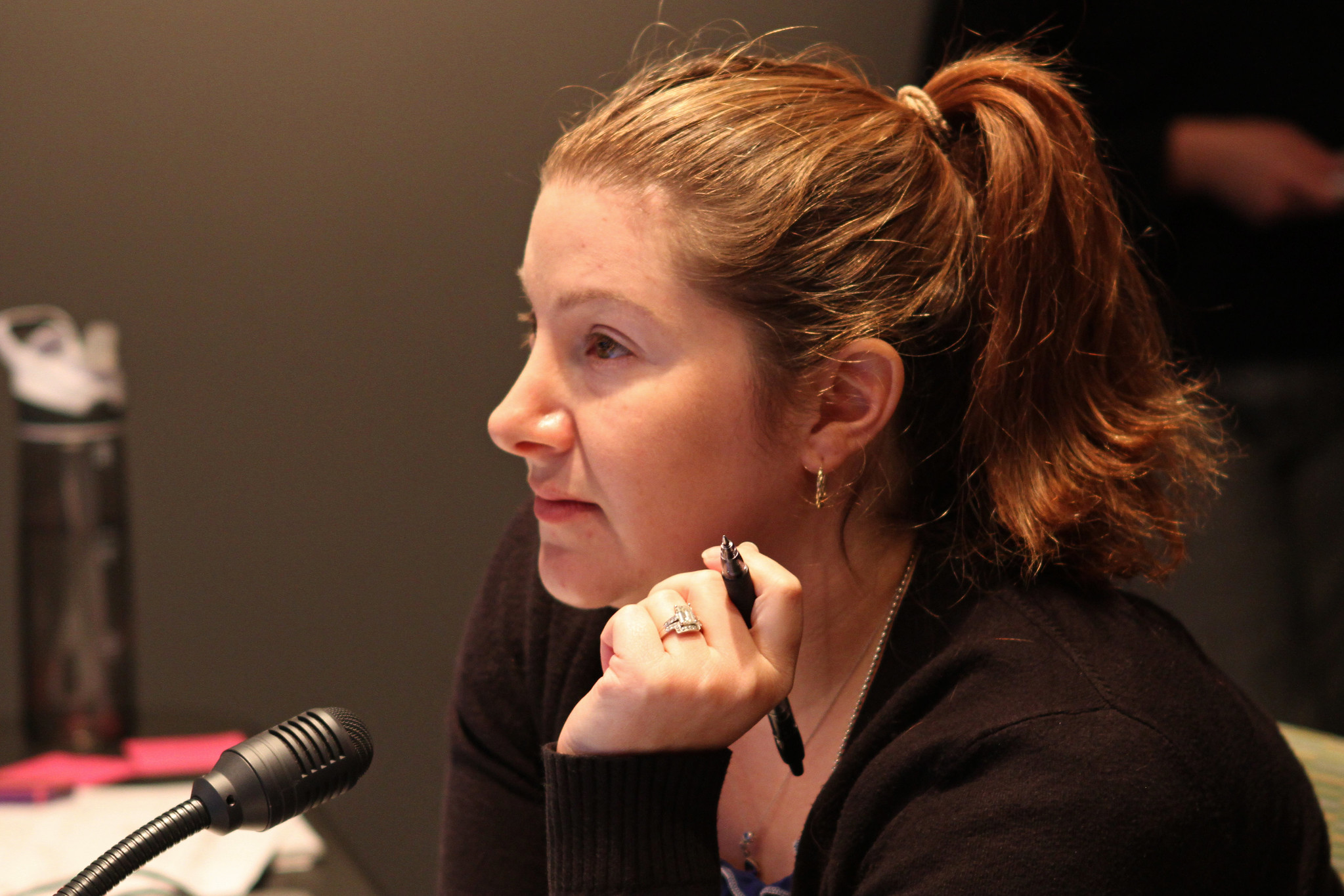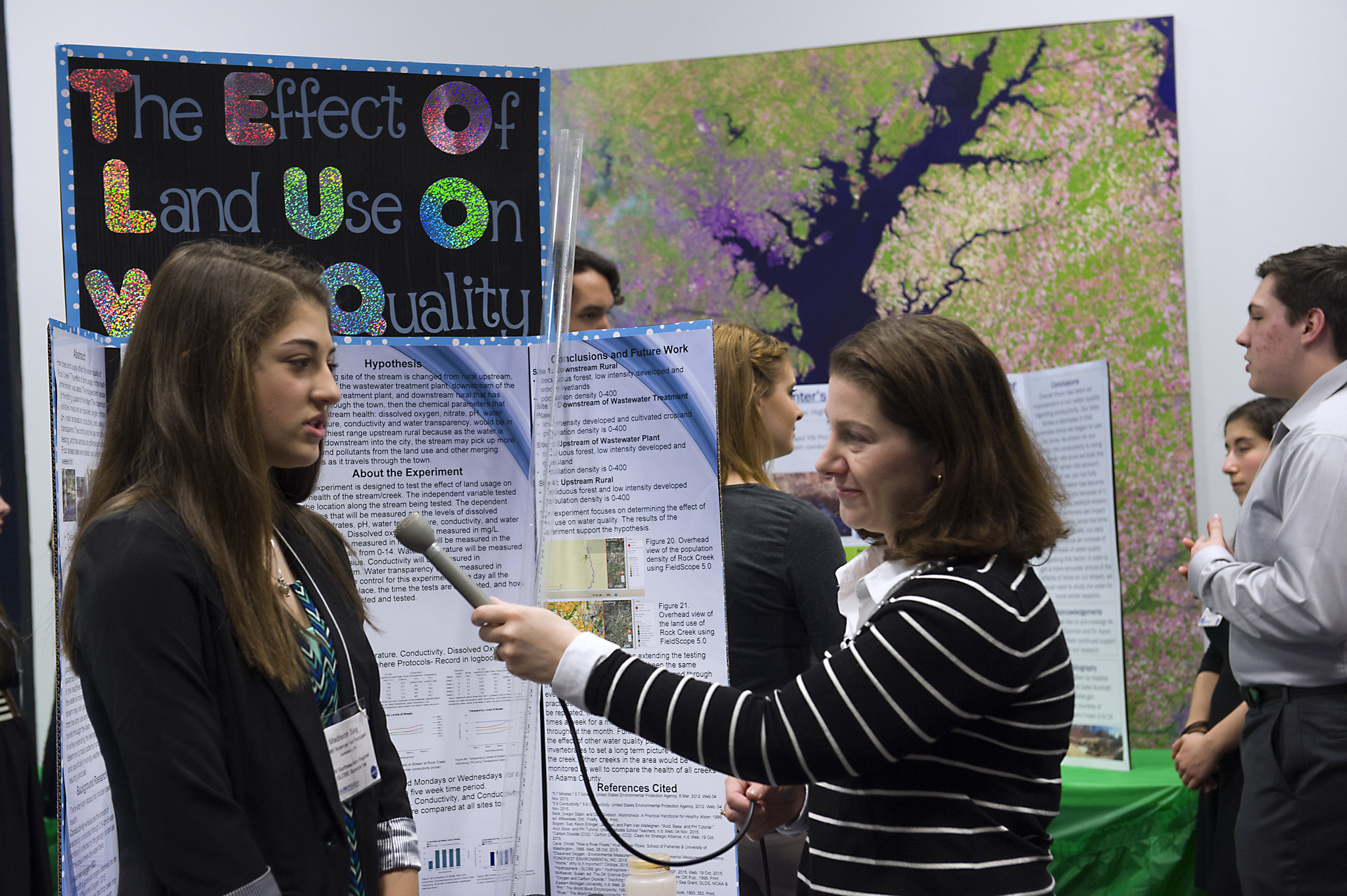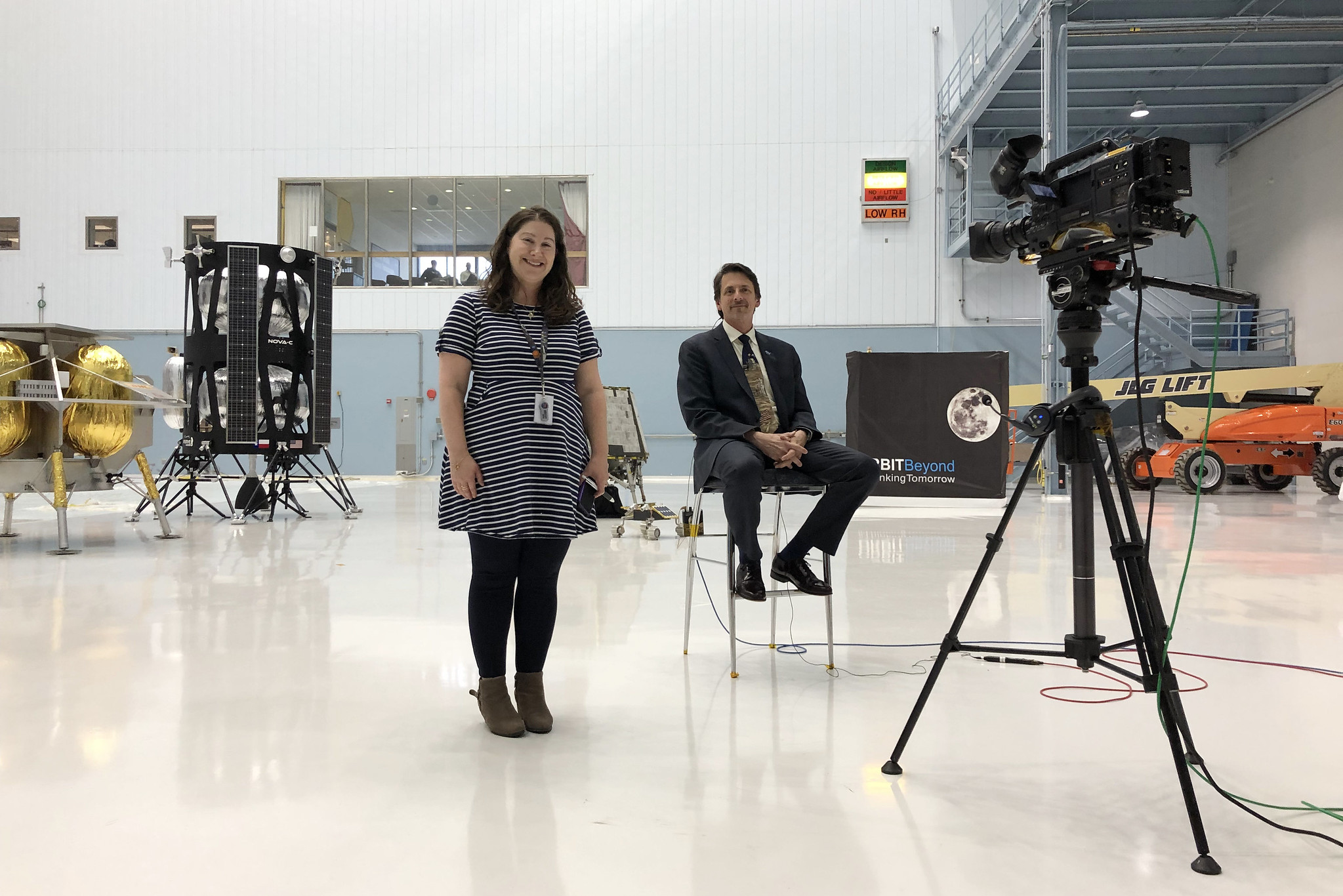Name: Michelle Z. Handleman
Title: Senior Multimedia Producer and Live Shot Program Lead
Formal Job Classification: Public affairs specialist
Organization: Office of Communications (Code 130)
You lead NASA’s Live Shot/Satellite Media Tour team. What does the Live Shot team do?
The purpose of Live Shots is to get NASA news out to media outlets and the general public. We do that via mostly short, local TV interviews. When I started, it was very science focused and focused just on things at Goddard. But it has now expanded to events and topics across the agency. There are so many stories that I can see making for great and interesting ways to engage the general public.
How does it feel knowing that you have put this program on the map at NASA and have gotten NASA content on air around the country?
I absolutely love it. I live and breathe this science. Anyone who knows me well, knows that this is where I am, this is where I’m meant to be. We need to continue pushing the general public to know about these topics and learn about them. And it is especially important to pique the younger generation’s interest in science, so that they go to study and learn more about these fields.
Your mom was a scientist. How did this impact your work and the way you look at your job now?
My mom was a biologist at NIH and worked in a department that worked on cancer research. Growing up, my mom was always very good about making sure we were understanding science and sparking our interest. But looking back, I think where I dropped off was in high school, when I felt like maybe I couldn’t do some of the sciences, like biology and chemistry. But I’ve always had a deep interest in science, especially space science.
The Live Shot team’s target audience is the general public. How did struggling with science in school yourself inform how you crafted the Live Shot program to reach who it reaches today?
I wish I had realized earlier on that science communication was something I could go into. I think that would have been helpful in making me understand that I didn’t have to be terrified by science. Just because I wasn’t good at biology or math, didn’t mean I couldn’t pursue other sciences as a science communicator.
I have a traditional journalism background, working in print and TV. But I just had this deep interest in space, and what I like about the Live Shot program is that I can come in with that deep interest, but not the science background, and I am able to translate these really complicated but super exciting stories into something for a general audience.
What would you say to people struggling through math classes and biology classes right now, who might be feeling like science is not for them?
You are stronger than you think. Science and math are hard, and there’s no question about that. I felt like I just fell off the radar with science even though I had a strong life science background. I thought maybe I couldn’t do it, or the math was not my strong point at the time. But looking back at it now, I feel like I could have been a scientist. If you put your mind to it, you can do it.
Were you aware that media and news careers existed at NASA?
No. There was a point, after I had graduated from undergrad, where I remember calling NASA. I can’t remember if it was Headquarters, or where exactly it was, but I was naïve. I called the number and said, “Hey don’t you guys need a writer or something?” And the person who answered was like, “No,” and hung up, and that was the end of it. I didn’t know why, but I had hope.
What are some of your favorite stories you have come across in your work at NASA?
About two weeks after I started, in late June of 2012, they found the ‘dinosaur footprint.’ To see that the slab they found was the largest collection of mammal and dinosaur footprints anywhere, was so cool: “The Rosetta Stone of the Cretaceous.” I love space and I love dinosaurs, and the footprint was found two weeks after I started. This could not be any more perfect for me, that they found a dinosaur footprint in this space-place! I’ve lived in this area my entire life, and I had no idea that Maryland was once a breeding ground for dinosaurs. (For an in-depth article on the dinosaur find at Goddard check out this story: https://www.nasa.gov/feature/goddard/2018/dinosaur-age-meets-the-space-age-at-nasa-goddard.)
What would you like to see happen in your lifetime with human space exploration? Do you want to go to space?
I would totally go. As I’ve watched private industry space exploration, seeing them take tourists off to space, I’m like, sign me up. I definitely want to see humans on the Moon again, and I would love to see them in my lifetime on Mars. Robots can only do so much. We really need human eyes and human emotions.
An example of the inner workings of live shots with Michelle Handleman’s expertise is found here: https://www.nasa.gov/feature/goddard/on-air-with-hubble-live-shots-at-nasa-goddard
Conversations With Goddard is a collection of question and answer profiles highlighting the breadth and depth of NASA’s Goddard Space Flight Center’s talented and diverse workforce. The Conversations have been published twice a month since May 2011 and are archived on the NASA Goddard homepage under the People tab.
By Fiona Flaherty
NASA’s Goddard Space Flight Center
































